Android smartphones have come a long way from the time of their initial launch. There is no denying that the initial launch was nothing proper, and Android as an operating system was nothing special to begin with. However, it did have some big visions; for starters, the operating system was completely open source.
Unlike the competition at time, this was a huge competitive edge that showed high hopes of Android as an operating system. After struggling for years when trying to break into the mainstream, Android finally took off when Google bought Android Inc. in 2005, and unveiled the first Android in 2007.
It has been almost a decade since Android has hit the market, and same goes for the Android smartphones. Things have evolved a lot, and are still evolving at a breakneck speed. This has allowed the top companies in the smartphone industry to bring the best out of their products.
Android smartphones are dominating the market these days, and Android has the majority of market share when compared to the competition. The biggest reason is that Android is available in countless phones, these can be from the entry level lineup, mid-range lineup, or high end/flagship lineup.
Of course, the higher you go, the better products you will be getting, but the fact that there is something for everyone remains the same. Today, I am going to be looking at some of the best Android smartphones in the market.
When I say best, I mean the flagships that are going to be leading the market for a year. Majority of list is dominated by Samsung since the company releases three flagships each year, but you will also get to see offerings from Google, HTC, OnePlus, and LG.
In order to make things a bit easier, I will be listing down the complete specs of each smartphone within the review.
Top 10 Best Android Phones 2020
1. Samsung Galaxy S8+
One of the best Android Phone of 2020
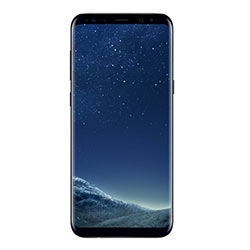
Samsung’s Galaxy S8+ was a smashing success upon release, breaking all the previous Samsung records and making new ones. The phone was innovation at its peak, with the gorgeous infinity display in the chassis that was just a few millimeters bigger than the S7 Edge.
However, the screen size was the real difference; the S7 Edge’s screen was 5.5 inches, whereas the S8+ had a gorgeous 6.2 inch display. The phone was also bundled with AKG earphones that were valued at a $100.
Samsung made sure that the S8+ and the S8 get the attention they deserve, and they created the beautiful devices. I am mentioning the specs of the phone below.
- CPU: 2.35GHz + 1.9GHz eight- core Qualcomm Snapdragon 835 or Samsung eight- core Exynos 8895 (2.35GHz + 1.7GHz)
- RAM: 4GB LPDDR4.
- Camera: 12-megapixel rear camera with f/1.7 aperture | 8-megapixel front camera with f/1.7 aperture.
- Battery: Non-removable 3,500 mAh Lithium Ion battery.
- Storage: 64GB UEFS 2.1 internal storage with microSD card slot.
- Special Features: USB Type-C, IP68 certification, iris scanner, finger print scanner, heartrate sensor, wireless charging, and facial recognition.
- Screen size/Resolution: 6.2-inch Super AMOLED display with 529 PPI, and resolution of 2,960 x 1,440 pixels.
- Android OS Version: Android 7.0 Nougat with scheduled upgrade to Android 8.0 Oreo.
As you can see that the Galaxy S8+ is a powerhouse that is going to be known as the smartphone to deliver an impressive performance. Everything about the phone is near perfect, the screen to body ratio, as well as the weight distribution.
The phone offers plenty of connectivity options, and thanks to a beefy battery, the phone manages to last a day on heavy use, and even more on light to moderate use. Battery timing is subjective and always depends on the person using the phone.
For a lot of people, the Galaxy S8+ is a great example of perfect engineering. I believe that the company can’t outdo themselves next year when a new phone comes out. Till then, the Galaxy S8+ will be my favourite phone of the year.
I do have some issues that are subjective; for starters, the finger print scanner is placed in a spot where it is difficult for people with small hands to access. In addition to that, it is somewhat difficult to find accessories for the phone, especially good tempered glass protectors.
Pros
- Gorgeous Super AMOLED screen that is a joy to look at.
- Infinity screen is a concept that didn’t just take off, it inspired several of other companies as well.
- Phone’s performance is top of the notch without any lags, or battery life issues.
- The camera is powerful enough to rival some of the higher end cameras in the world.
- Solid battery life.
Cons
- Finger print scanner is awkward placed for people with small hands.
- Finding the right accessories might be an issue for some people.
- No stereo speakers.
2. LG V30
The Best Android Phone Form LG
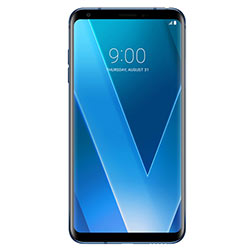
The V series by LG is an answer to Samsung’s Note series. Not many people know but Samsung and LG are one of the biggest competitors, that is mainly because they originate from South Korea. With that said, the LG V30 is on the review table, after the success of LG G6, the company decided to take things up a notch and deliver something even better.
In came the LG V30, following the footsteps of the G6, but with a lot of advanced features, and probably one of the most powerful camera hardware that is found on a modern day smartphone. For people who want to be extra careful with their devices, the LG V30 also featured military grade drop protection.
- CPU: Qualcomm MSM8998 Snapdragon 835 CPU Octa-core (4×2.45 GHz Kryo & 4×1.9 GHz Kryo)
- RAM: 4GB LPDDR4.
- Camera: Dual 16 MP f/1.6 rear camera | 13 MP f/1.9 front camera.
- Battery: Non-removable Li-Po 3300 mAh battery.
- Storage: 64GB internal storage with microSD card slot.
- Special Features: MIL-STD-810G compliant, quad DAC, IP68 dust and water proof,
- Screen size/Resolution: 6.0-inch P OLED panel with screen resolution of 1440 x 2880 pixels
- Android OS Version: Android 7.1.2 Nougat with scheduled upgrade to Android 8.0 Oreo.
Judging from the looks of it, there is no denying that the LG V30 is an absolute powerhouse. I would like to mention that LG didn’t get here easily. Ever since the launch of LG G4, the company has faced quite a lot of turmoil, enough to tarnish their name forever.
However, they kept fighting it back, and making sure that they make improvements in one way or another. The LG G5 was company’s attempt at restoring the name of the company but due to some poor measurements, and the steps company took, the phone fell short of expectations.
When LG finally released LG G6, the ray of hope came back because it was a completely revamped phone from the G series, and offered everything a person needs in modern smartphone. Then came the V30 and restored the company’s image as innovator completely.
The V30 is unlike any other phone LG has ever made, and it is only the third phone of the V series that is geared towards enthusiasts. We can only hope what the future phones from the series will be bringing to the table.
I have no major complaints with the LG V30 as far as performance, design, or hardware is concerned. My only complaint here is that the company should part ways with the current state of the UI, and opt for something simpler, and cleaner.
Pros
- Top of the line performance in both benchmarks, and real life.
- Camera hardware has to be the most powerful in a mobile phone at the moment.
- Solid battery life.
- Ample connectivity options.
- Waterproof with military grade drop protection.
Cons
- The UI still feels cartoonish at best.
3. Huawei Mate 10 Pro
The Best Smart Phone From Huawei
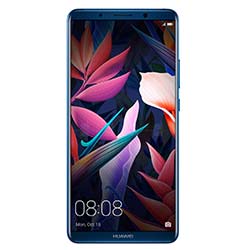
For those who don’t, Huawei is on the number 3 of top phone manufacturers. This is the combination of different factors like amount of phones sold and produced. Samsung sits at number 1 with Apple at number 2. So there is no denying that the company is famous for their phones.
They even have their own in-house processors for their higher end smartphones. The Huawei Mate 10 Pro is the latest and greatest offering from Huawei that has arrived in the market to make waves. The Huawei Mate 10 Pro offers everything you would want from a top of the line, expensive smartphone.
- CPU: Hisilicon Kirin 970 CPU Octa-core (4×2.4 GHz Cortex-A73 & 4×1.8 GHz Cortex-A53)
- RAM: 4GB/6GB
- Camera: Dual 20-megapixel + 12-megapixel rear camera with f/1.6 aperture | 8-megapixel front facing camera with f/2.0 aperture.
- Battery: Non-removable Li-Po 4000 mAh battery
- Storage: 64GB/128GB internal storage with no card slot.
- Special Features: IP67 dust and water resistance, 32bit audio, HDR10 compliance.
- Screen size/Resolution: 6.0-inch AMOLED screen with 1080 x 2160 pixels resolution.
- Android OS Version: Android 8.0 Oreo out of the box.
As far as the specs are concerned, I will not lie that the Huawei Mate 10 Pro is a definite powerhouse, and looks absolutely stunning with the glass/metal construction. Sure, the glass and metal are becoming more and more common, but it is certainly the right way to do.
My experience with the Huawei Mate 10 Pro was great, the phone serves as a benchmark to tell just how far Huawei has come as a smartphone manufacturer, and what it will be doing in the near future with more devices.
I do have one big issue with the Mate 10 Pro though, the phone doesn’t come with a headphone jack, and although a 3.5mm to USB Type C connector is provided in the box, it’s just not enough for me. As a traditionalist, I want the headphone jack so I can power my headphones when I just don’t feel like doing things wirelessly.
Give this phone a headphone jack, and it has the potential to become one of the biggest devices of the year, because it’s that good in every other department. The screen is gorgeous, the performance is solid, and it has one of the cameras in any smartphone I have tested.
With so much to offer, the Huawei Mate 10 Pro is another corner stone in the long history of success that has been enjoyed by Huawei.
Pros
- Looks solid, and is a treat to handle.
- Available in some striking colours.
- Powerful hardware.
- Among the best camera oriented smartphones.
Cons
- No headphone jack is a huge turn off.
4. OnePlus 5
Best Budget Smart Phone 2020
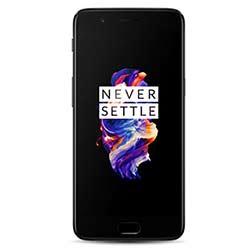
When OnePlus originally debuted back in 2013, they shocked the world by keeping the costs down and having the highest end specs as compared to the competition. Back then, the company was touting the “flagship killer” name for all of their phones, and had a motto of “Never Settle.”
Despite being the new kid on the block, OnePlus was already aware of some of the market tactics, the same tactics and strategies helped break them into the mainstream market. Ever since their arrival in the market, the company has released a total of 6 devices with the 7th (OnePlus 5T) coming out soon
The OnePlus 5 is the latest flagship at the point that costs cheaper than the likes of Galaxy S8 series, and has the same high end specs.
- CPU: Qualcomm MSM8998 Snapdragon 835 CPU Octa-core (4×2.45 GHz Kryo & 4×1.9 GHz Kryo)
- RAM: 6GB/8GB LPDDR4.
- Camera: One 16-megapixel rear camera with f/1.7 aperture and one 20-megapixel rear camera with f/2.6 aperture 36mm lens | 16-megapixel front facing camera with f/2.0 aperture and 20mm lens.
- Battery: Non-removable Li-Po 3300 mAh battery
- Storage: 64GB/128GB internal storage with no expandable option.
- Special Features: Near stock Android experience, dash charging.
- Screen size/Resolution: 5.5-inch AMOLED screen with 1080p resolution.
- Android OS Version: Android 7.1.1 Nougat with scheduled upgrade to Android 8.0 Oreo.
OnePlus 5’s attention to simplicity, and detail makes it one of the best phones in the market at the moment. Sure, it does not have the flashy infinity display, and the bezels are surely very 2015, but at its core, the phone performs, and does a pretty good job at that.
The camera was never a strong part on the OnePlus phones, but the good thing here is that OnePlus has actually made an effort in making the camera better. My testing revealed that the camera took some really good looking photos, and didn’t create any issues whatsoever.
The phone doesn’t slow down even after prolonged use thanks to the near stock software. Yes, there are some OnePlus elements on the top, but for the most part, the software is completely stock. With that in mind, I am not going to say that OnePlus 5 is the perfect device.
There are some quirks, for instance, 1080p on a 2017 device is a huge letdown. Another thing that I didn’t like is the jelly effect the screen faces. That happens because the assembly is placed upside down rather than the standard method that every other manufacturer uses.
If you are okay with these small inconveniences, then the OnePlus 5 is a must buy.
Pros
- Stock Android has always been a treat to use.
- Great fluidity in both intensive and minor tasks.
- The matte black finish looks and feels great in the hand.
- Pretty amazing camera setup.
Cons
- 1080p display doesn’t cut it in 2017.
- The jelly effect can be a bother if you like to scroll fast.
5. Google Pixel 2
Smooth and Fast Android Experience
![]()
Google recently went ahead and released the latest and greatest Pixel 2 and Pixel 2 XL into the market. After replacing the Nexus lineup, the Pixel lineup has become the mainstream devices that are released outside of Google.
I must say that I never really understood the point of releasing the flagships at the end of the year, this gives them a very little time to actually sell before they are replaced by more powerful phones in the coming years. However, these phones are the perfect way of showcasing Google’s latest iteration of Android as well.
Both the Pixel 2, and Pixel 2 XL are shipping with Android 8.0 Oreo. Another thing that you should note is that Google is no longer focusing on keeping the cost lower as it used to do with their Nexus lineup of phones. The Pixel series carries a premium, and in many cases, the premium is well worth the price.
- CPU: Qualcomm MSM8998 Snapdragon 835 CPU Octa-core (4×2.35 GHz Kryo & 4×1.9 GHz Kryo)
- RAM: 4GB LPDDR4.
- Camera: 12.2-megapixel rear camera with f/1.8 | 8-megapixel front facing camera with f/2.4 aperture.
- Battery: Non-removable Li-Ion 2700 mAh battery
- Storage: 64GB/128GB with no card slot.
- Special Features: Completely stock Android experience with no enhancements, active squeeze feature.
- Screen size/Resolution 5.0-inch 1080p display.
- Android OS Version: Android 8.0 Oreo.
On paper, the Google Pixel 2 looks like the perfect Android phone, and for many, it is the embodiment of the perfect Android phone as well. It has a completely stock experience, and lets you use the OS the way you want. Google has promised to support this phone with regular updates for 3 years after the launch.
You will be getting regular monthly updates in shapes of monthly patches that will feature both the fixes done to Android, and the overall ecosystem itself. It shouldn’t come as a surprise that Google wants this phone to sell, and judging by how well it is doing in the market at the moment, it is going to sell
One thing that I absolutely despise about this phone is something that originates from a step taken by another company. I am still not okay with the removal of the headphone jack on the Pixel 2. Remember last year when Google made jabs at Apple for removing the headphone jack?
At that time, it was safe to believe that Google will not do the same; sadly, such is not the case with Google Pixel 2, or Pixel 2 XL because both phones are missing the headphone jack. You do get the fancy dongle if you wish to use your wired headphones.
Pros
- Stock Android experience is a treat to use.
- Camera is amazing.
- Great fluidity.
- Solid build quality.
- Simple and easy to use.
Cons
- Removal of headphone jack is a sad story.
- The bezels on the Pixel 2 are unapologetically large.
6. HTC U11
The HTC U11 is a wildly impressive phone
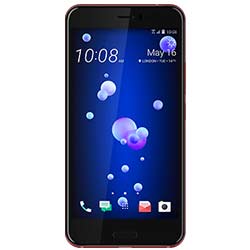
Despite having one of the biggest customer fan base, and loyal users, HTC’s brand image has been somewhat tarnished. There are several reasons behind that, and the biggest reason is the inconsistency with their flagships smartphones. The first thing in that aspect is the confusing naming scheme.
HTC One was also known as HTC M7, that followed by M8, M9, but instead of an M10, HTC just released an HTC 10. While the phone was decent, it didn’t manage to hold up that well. Now the HTC U11 is sequel to HTC 10; you can see just how bold HTC is trying to be with this flagship.
- CPU: Qualcomm MSM8998 Snapdragon 835 CPU Octa-core (4×2.45 GHz Kryo & 4×1.9 GHz Kryo)
- RAM: 4GB/6GB LPDDR4.
- Camera: 12-megapixel rear camera with f/1.7 aperture | 16-megapixel front facing camera with f/2.0 aperture.
- Battery: Non-removable Li-Ion 3000 mAh battery.
- Storage: 64GB/128GB internal storage and a microSD card slot
- Features: IP67 dust and water resistance, squeeze feature allows you to trigger certain features, there is a version that is fully made out of sapphire, even the screen.
- Screen size/Resolution: 5.5-inch, Super LCD display with 1440p resolution.
- Android OS Version: Android 7.1 Nougat with planned upgrade to Android 8.0 Oreo.
On paper, everything about the HTC U11 speaks flagship, from the solid build quality to top of the line hardware, and one of the best cameras that I have had the pleasure to use on an HTC smartphone in a long time. However, thee phone felt incomplete in more than just one department.
The phone’s bezels are unapologetically large on all four angles, and the exclusion of headphone jack is just terrible. Sure, HTC does provide you with an adapter, and makes up for the lack of headphone jack with an amazing noise cancellation headphones. Sadly, for those who want to charge their phones, and listen to music at the same time, you can’t do that unless you buy another dongle with the phone.
The battery is also quite small for a flagship, and while I did get decent battery timings, the phone leaves something to be desired in the end. All in all, I can only say that if HTC U11 takes 2 steps forward, it also takes 2 steps towards the back.
HTC had the chance to prove their dominion, and so they did, but that comes at an expense of some basic lack of necessities. The phone is excellent, but the lack of enough resources ultimately make you wonder why you spend enough money on it.
Pros
- Stunning looks despite large bezels.
- Some absurdly good looking colour options.
- IP67 rating is better than no rating.
- Amazing camera performance.
- The squeeze feature can actually be useful.
Cons
- There’s no headphone jack.
- The bezels are laughably large.
- The battery time could have been an improvement.
7. Google Pixel 2 XL
One of the very best smartphone cameras
![]()
If for some reason you think that the Pixel 2 is not as big or flashy for your taste, Google is offering Pixel 2 on steroids as well. I am talking about the Pixel 2 XL here, one of the most powerful smartphones available in the market, and a phone that is not ashamed to adapt to the modern requirements.
Side by side, the only way to say that Pixel 2 and 2 XL are from the same series is by looking at the back of the phone. Other than that, the 2 XL looks nothing like its younger sibling. Now, it may create issues for some, but the change here is actually positive, and I am happy to see that Google is evolving.
- CPU: Qualcomm MSM8998 Snapdragon 835 CPU Octa-core (4×2.35 GHz Kryo & 4×1.9 GHz Kryo)
- RAM: 4GB LPDDR4.
- Camera: 12-megapixel rear camera with f/1.8 sensor | 8-megapixel front facing camera with f/2.4 aperture.
- Battery: Non-removable Li-Ion 3520 mAh battery
- Storage: 64GB/128GB with no support for microSD card slot.
- Features: Squeeze feature makes a return and is useful as ever, stock Android is a treat to use.
- Screen size/Resolution: 6.0-inch P OLED display with 1440 x 2880 resolution.
- Android OS Version: Android 8.0 Oreo.
Specs wise, there are similarities between both the devices in the Pixel family, however, the real difference comes when you look at the screen. Pixel 2 XL is not using an AMOLED panel, it comes with the P OLED panel, and even the aspect ratio has been changed to 18:9 in order to meet the modern day standards.
Pretty much every other specification is the same, and for the good part. Changing too much would have diverted the users to a completely different phone. Sadly, IP certification is missing from both devices, and it only makes me wonder if Google thinks that the users will not be dropping their phone in the water.
The performance on this device is as immaculate as it can get; during my week with the device, the phone showed absolutely no slowdowns whatsoever, and the performance was snappy. Even when I had several apps opened at once, or was multi-tasking.
I would again point out the fact that the removal of headphone jack is the saddest thing for me because for a phone that shows so much promise, a basic feature like this should have been there as well. I will also like to add that despite not being perfect, Pixel 2 XL is a step in the right direction by Google.
I would very much like to see the future versions of Pixel to have some sort of enhancement that makes them even better, and give the competition a tough time.
Pros
- Excellent performance.
- Drastic design change from the younger sibling.
- Solid battery life.
- Brilliant front, and rear camera.
- Squeeze feature needs to become a norm.
- Stock Android all day every day.
Cons
- Headphone jack leaves something to be desired.
8. LG G6
One of the best water-resistant Android Phone
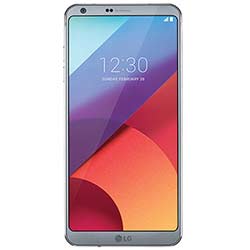
We have another LG phone on our list, and this time we are looking at the LG G6. Much like Samsung, LG releases two flagships every year; one from the G series, and the other one from the V series. The V series is always improved on the foundations of the G series phone.
LG G6 is a revamp from LG’s previous work, it’s almost as if LG completely redesigned the phone so it could fit the modern market niche. Gone is the plastic that made the phone look cheap. In order to meet the standards and demands of the modern day consumer, LG has decided to use aluminum and glass construction on the G6.
- CPU: Qualcomm MSM8996 Snapdragon 821 CPU Quad-core (2×2.35 GHz Kryo & 2×1.6 GHz Kryo)
- RAM: 4GB LPDDR4.
- Camera: Dual 13-megapixel rear cameras with f/1.8 aperture | 5-megapixel front facing camera with f/2.2 aperture.
- Battery: Non-removable Li-Po 3300 mAh battery
- Storage: 32/64/128GB with option to expand.
- Features: 32-bit audio, IP68 certification.
- Screen size/Resolution: 5.7 inch screen with 1440 x 2880 pixels resolution, 18:9 aspect ratio.
- Android OS Version: Android 7.0 Nougat with Android 8.0 Oreo upgrade planned.
Now in case you are wondering why despite being a modern flagship of 2017, the LG G6 comes with an older Snapdragon 821. That is because when Samsung teamed up with Qualcomm and made Snapdragon 835, they got the exclusive rights to the soc’s first batch.
That is why LG G6 had to be shipped with a lesser powerful processor. However, the good thing is that during my testing, I didn’t notice a lot of difference in performance, and the phone was pretty fluid to begin with.
Cameras were wonderful, and I could tell that the difference from the LG G5 to LG G6 was huge. Needless to say, the LG G6 is a true powerhouse. The construction is solid, the features are amazing, and the phone has a pretty nice battery life as well.
If you are wondering, there is no lag, whatsoever either. So, the entire performance of the phone remains consistent throughout. Even if you are a heavy user, you will not be feeling like there is something missing out, because the phone managed to hold up pretty nicely.
At this point in time, my only complaint with the LG G6 would be the fact that LG released the phone with an older chip inside. Had LG waited a bit more than they did, we could have had a much more powerful, and long lasting flagship than the G6.
Still, the phone is pretty amazing, and I can’t take that away from it.
Pros
- Impressive build quality.
- Great cameras.
- Decent battery life.
- Superb audio quality.
Cons
- Snapdragon 821 is not the fastest processor in the market.
9. Samsung Galaxy S8
Best Android Phone Overall
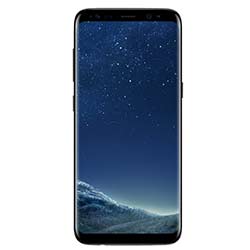
It’s not odd for Samsung to release three flagships every year, the company has been following the same procedure since the release of the Galaxy S6. The first ever mainstream device from Samsung that introduced the edge to edge display. After 2 years, the company has now standardized the edge display in their flagship smartphones.
The Galaxy S8 is the younger brother to the famous Galaxy S8+. Luckily, both of the devices share everything apart from the screen size. Meaning that the same specs that are found in the S8+ are also going to be in the S8.
- CPU: 2.35GHz + 1.9GHz eight- core Qualcomm Snapdragon 835 or Samsung eight- core Exynos 8895 (2.35GHz + 1.7GHz)
- RAM: 4GB LPDDR4.
- Camera: 12-megapixel rear camera with f/1.7 aperture | 8-megapixel front camera with f/1.7 aperture.
- Battery: Non-removable 3,000 mAh Lithium Ion battery.
- Storage: 64GB UEFS 2.1 internal storage with microSD card slot.
- Special Features: USB Type-C, IP68 certification, iris scanner, finger print scanner, heartrate sensor, wireless charging, and facial recognition.
- Screen size/Resolution: 5.8-inch Super AMOLED display with 570 PPI, and resolution of 2,960 x 1,440 pixels.
- Android OS Version: Android 7.0 Nougat with scheduled upgrade to Android 8.0 Oreo.
As you can see, the specs are identical in every aspect minus the screen size and the battery capacity. I will be simple here, if you think that the S8+ is too big for your hands, or you can’t comfortably put your finger on the fingerprint sensors, then the standard S8 is a great device to have.
The smaller footprint is definitely something that may make the users with big hands feel awkward and out of place. The good thing here is that the phone is designed in such a way that the ergonomics remain solid. Believe it or not, despite having a larger screen than S7 Edge, the S8 is still shorter in overall height.
There isn’t much to complain about here as Samsung has done a truly wonderful job at creating what I would call a near perfect smartphone. It has all the bells and whistles one could look for in a modern day smartphone, and that’s the beauty of it.
I only wish that the phone also shipped with a set of stereo speakers; Samsung has reached a point at which the company is making innovations, but also ignoring and simple feature to have.
I can attest that Samsung has truly made an engineering marvel, and assured that there are no stones left unturned. I can only imagine what the next flagship from Samsung is going to be like.
Pros
- Offers the same gorgeous looks as its elder sibling.
- Great camera performance on both front and rear cameras.
- Loaded with sensors, and top tier features.
- Solid battery life.
- Despite being a skinned version of Android, the fluidity is there.
- Super AMOLED infinity display is something to awe at.
Cons
- No stereo speakers.
10. Samsung Galaxy Note 8
The Best Smart Phone From Samsung

The last device on the list is again from team Samsung, and it’s the Samsung Galaxy Note 8. After the horrible debacle that the Note 7 ended up being, all eyes were on Samsung when the time came to release their flagship smartphone.
Now for those who don’t know, the Note series of Samsung is aimed at creativity fueled people, and this series is always built on the foundation that was laid by the S series that was released before. Let’s take the example of infinity display in account.
Samsung noticed how the display was a huge success, so much so that they decided to incorporate the same display into the Galaxy Note 8. That’s not all, the Note 8 also features the much awaited dual camera setup.
- CPU: 2.35GHz + 1.9GHz eight- core Qualcomm Snapdragon 835 or Samsung eight- core Exynos 8895 (2.35GHz + 1.7GHz)
- RAM: 4GB/6GB LPDDR4.
- Camera: Dual 12-megapixel rear cameras with f/1.7 aperture | 8-megapixel front camera with f/1.7 aperture.
- Battery: Non-removable 3,300 mAh Lithium Ion battery.
- Storage: 64GB/128GB UEFS 2.1 internal storage with microSD card slot.
- Special Features: USB Type-C, IP68 certification, iris scanner, finger print scanner, heartrate sensor, S-Pen, wireless charging and facial recognition.
- Screen size/Resolution: 6.3inch Super AMOLED display with 521 PPI, and resolution of 2,960 x 1,440 pixels.
- Android OS Version: Android 7.0 Nougat with scheduled upgrade to Android 8.0 Oreo.
As you can see, the specifications are nearly identical when compared to the Galaxy S8 and S8+; the major differences come in a shape of battery capacity, dual cameras, and of course, the iconic S-Pen. I really like Samsung’s implementation of the dual cameras.
The 2nd sensor is a telephoto lens, and offers 2x optical zoom. This is great for taking portrays that look like they have been shot using a DSLR camera. Thanks to the fact that they introduce hardware level depth of field, as well as something known as the bokeh effect.
Rest of the user experience remains entirely the same with the performance being as good as Galaxy S8 and S8+. One thing that I would say needs to change is the fact that the Galaxy Note 8 isn’t as easier to handle as compared to the younger siblings.
The design language is largely the same, apart from the fact that the phone is now more rectangular instead of going for the usual shape of the younger siblings. Still, it is a very, very capable device and an absolute powerhouse for people who want to be able to get creative with their device.
At this point, it is nearly impossible to tell what Samsung is going to do next, and how will they overcome the masterpiece that they have created. Needless to say, the Samsung Galaxy Note 8 is the near perfect device, however, it is not a good choice for people who already own the Galaxy S8, or the S8+.
Pros
- Top of the line specs packed in one slim, and gorgeous package.
- Dual camera implementation is clever.
- While S-pen may look like gimmick to some people, it’s effective as it can get.
- Solid battery life.
- The infinity display still looks stunning to look at.
Cons
- The footprint might be a bit too big for some.
- Fingerprint placement is still out of place, but you get used to it.
Watch Video for more Best Android phones
Conclusion
I love smartphones and Android as a whole, so when I was told that I have to review the best Android smartphones, it was something that felt scary, and good at the same time. Scary because every device is different than one or the other despite having the same specifications.
Good, because I will get to spend a nice amount of time with some of the best devices available in the market. Whatever the case maybe, I have nothing but love for this roundup. Sure, it was not easy to prepare but the devices that I had the chance to test were all amazing.
Due to the fact that all devices are so similar to one or another, it is really difficult to pick up the best device there is in the market at the moment. So, I have decided to list down the top 3 devices that are on the top with respect to their niche, or their audience.
- Samsung Galaxy Note 8. (Best phone for productivity)
- LG V30. (Best phone for media consumption)
- Samsung Galaxy S8+ (Best overall phone)
These are the three devices that all deserve equal amount of respect and praise because despite not being a lot different than one and the other, they are still amazing. I hope you agree with the list of the best Android smartphones. Should you feel a conflict, feel free to let me know, and I will see to your issue.
